While the different types of Air Plants look somewhat the same, a closer look can help you differentiate them easily!
Airplants stand out as one of the most versatile plants that can easily thrive in neglect! Not only do they not require any soil to grow, but their compact size makes them an even feasible option to style in almost every corner of the house. So, if you are wondering which one to pick, we have listed the best types of Air Plants for you!
Types of Air Plants
1. Sky Plant
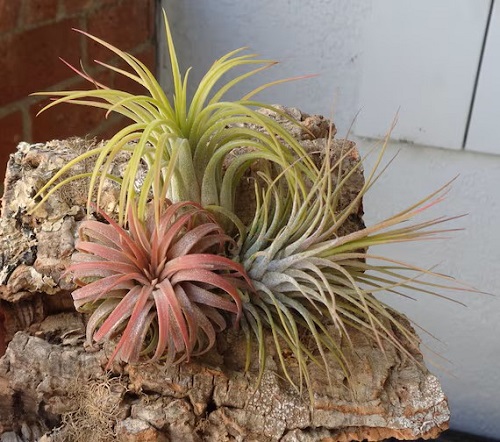
Botanical Name: Tillandsia ionantha
Commonly known as the “blushing bride,” the sky plant boasts silvery green leaves throughout the year. However, in late fall and early winter, it undergoes a dramatic transformation as it begins to bloom with bright yellow and violet flowers.
However, this happens only once in their lifetime as this blooming signals that the plant is nearing the end of its life cycle.
2. Fuego
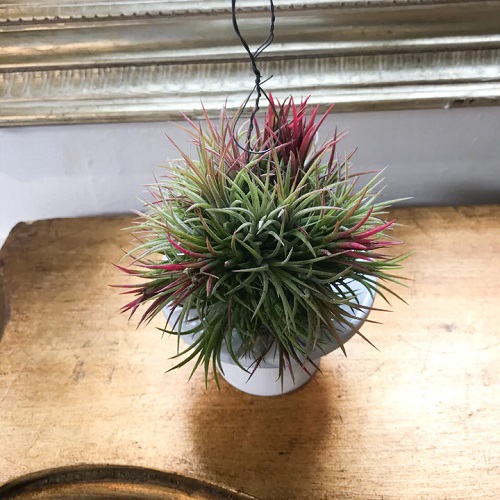
Botanical Name: Tillandsia ionatha fuego
The Fuego variety of Tillandsia bears the classic silvery green foliage that undergoes a dramatic transformation as it prepares to bloom—the leaves evolve from a deep moss green to a pink-red, creating an ombre effect.
Though the plant only grows to about 3 inches tall, the unique color makes up for it!
3. Maxima Sky Plant
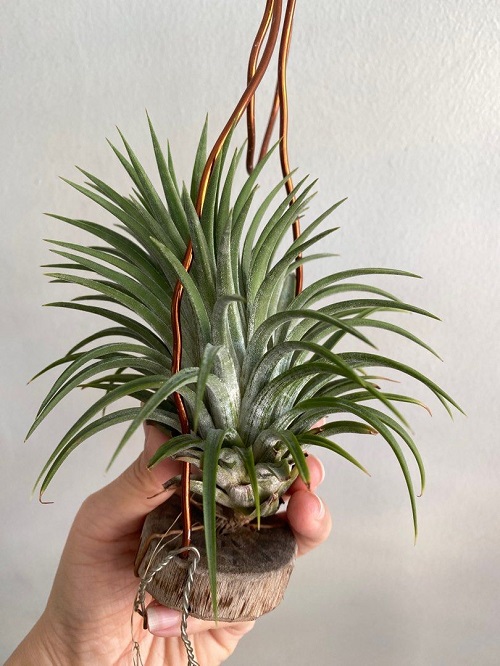
Botanical Name: Tillandsia ionantha maxima
Originating from Mexico, this variety can handle the sun better than its cousins. With proper care and a little extra light, the leaves transition from silvery-green or moss-green to a delicate peach or coral just before producing brilliant purple flowers.
4. Pink Quill Plant
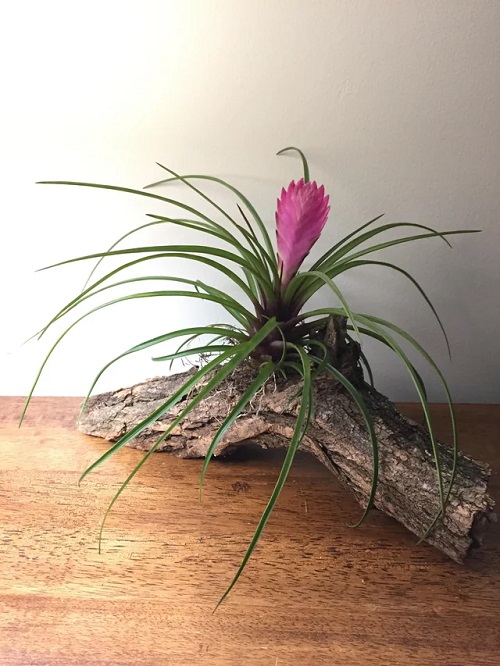
Botanical Name: Tillandsia cyanea
Pink Quill is the rebel in the Tillandsia family, which can grow both with and without soil. This plant earns its name as it reaches maturity, unfurling pink quills that precede the emergence of purple-blue flowers, which resemble vibrant feathers and last impressively long.
5. Mad Pupper
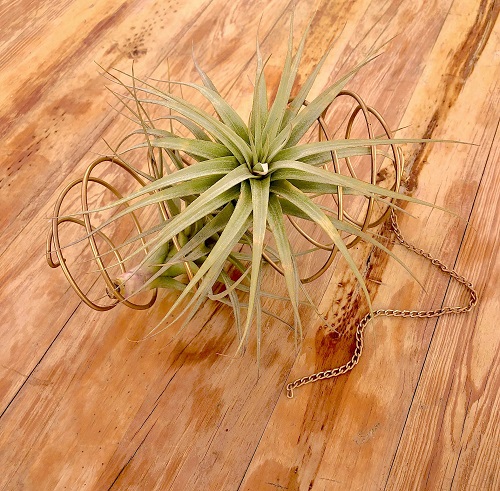
Botanical Name: Tillandsia aeranthos bergeri
Though most Tillandsias produce pups only once in their lifetime, this does not hold true for the “Mad Pupper” variety. As you can probably gauge from the name itself, this air plant variety produces pups throughout its life, thus giving you a chance to propagate it multiple times.
And why would you not? Their pink and blue flowers are simply gorgeous!
6. Snowball
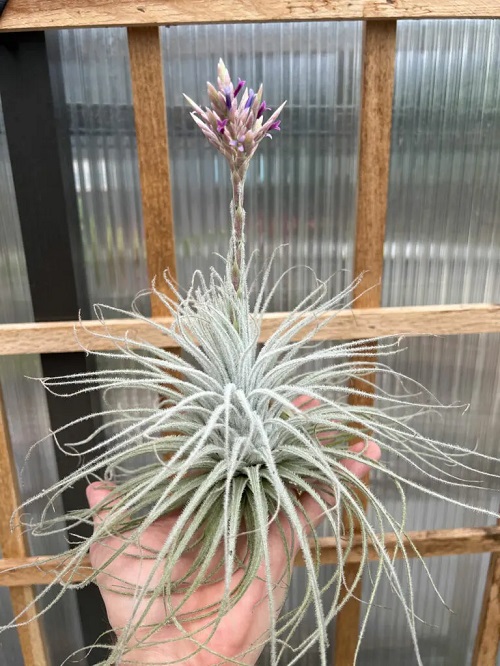
Botanical Name: Tillandsia tectorum
This air plant actually looks more like a snowball than an epiphyte, thanks to its fuzzy, white leaves! Moreover, the spindly, fuzzy leaves grow in a round shape, sealing the reason for its nickname even further.
7. Kolbii
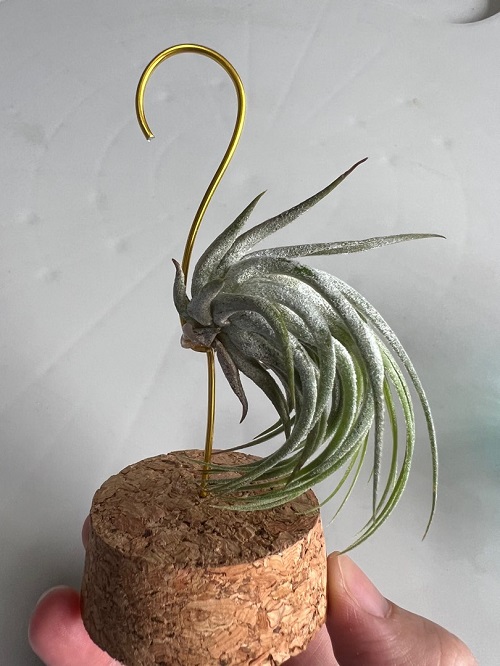
Botanical Name: Tillandsia scaposa kolbii
Growing to a height of 2 to 5 inches, the Kolbii is a cute little plant with bright green leaves speckled in silver around the base, resembling that of Easter grass. As the plant matures, the “Kolbii” assumes more of a fountain shape as the leaves start opening up.
8. King of Tillandsias
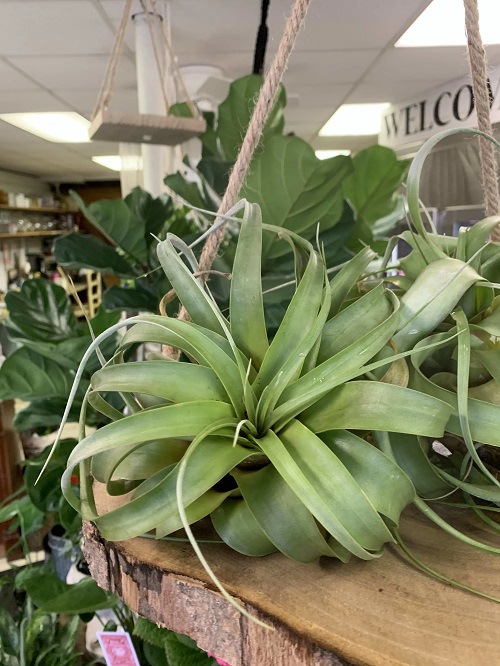
Botanical Name: Tillandsia xerographica
Need a statement green piece to enhance the decor in your home? Meet the “King of Air plants” and, rightly called so, because of its massive size! It reaches upto 3 feet in the right conditions and sports light green flocked leaves, each curling towards the tip. Plus, you can count on a tall flower from this plant, too!
9. Brachycaulos
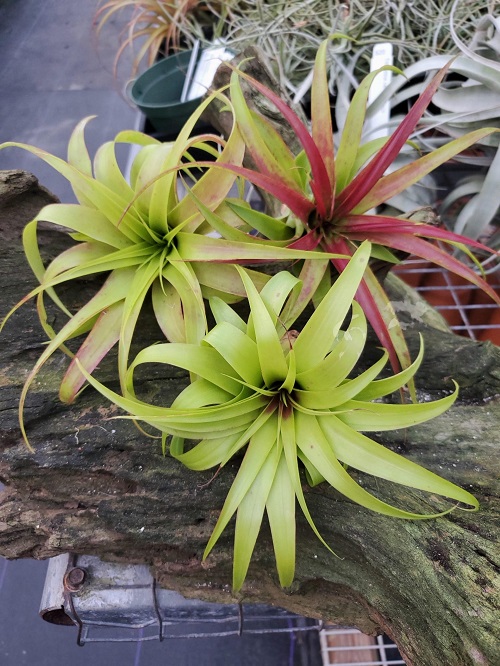
Botanical Name: Tillandsia brachycaulos
The gentle green leaves of the Brachycaulos droop elegantly below the plant before curling back towards the center. As the plant matures and reaches its adult height of 6 inches, you can also enjoy the red tips on its leaves.
10. Shirley Temple

Botanical Name: Tillandsia streptophylla
Nicknamed “Shirly Temple” for its tightly curled leaves, it’s clearly a close competition between Shirley Temple’s signature ringlets and the streptpphylla’s unique look! Under drier conditions, its leaves ingeniously twist and weave, transforming into an intricate bundle of green.
11. Bulbous Air Plant
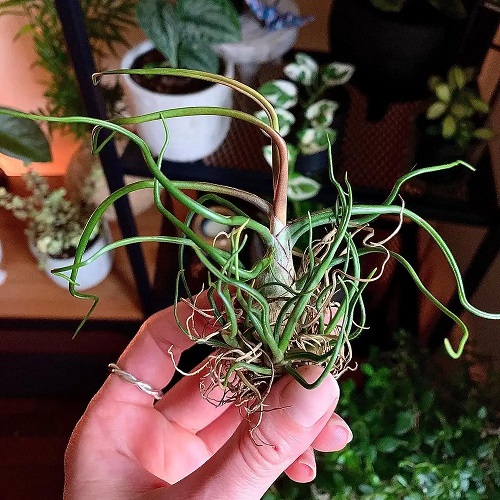
Botanical Name: Tillandsia bulbosa
Of course, the bulbous air plant’s appearance is best described as bulb-like, with its tentacle-like leaves curling inwards. As it matures, expect to see an eruption of vibrant red and yellow flowers, especially if you mist the plant regularly.
12. Peach
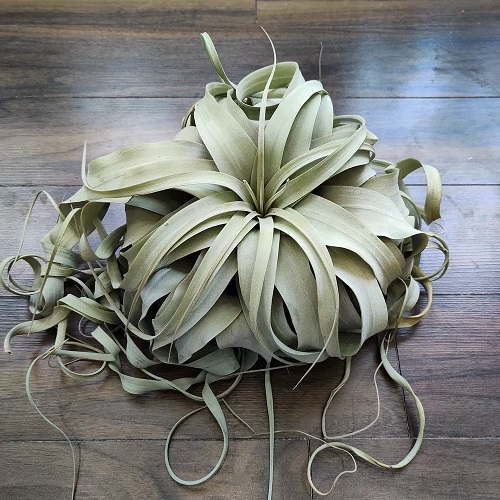
Botanical Name: Tillandsia capitata
If you haven’t already guessed, the “peach” variety of Tillandsia is named so because of the pinkish peach color of its mature leaves. Native to Mexico, Dominican Republic, and Cuba, this is yet another variety thriving best in humid conditions but enjoys the sun and blooms with bright purple flowers.
13. Cacticola
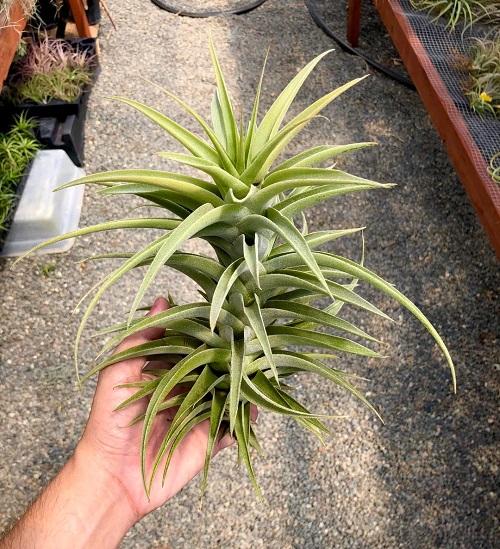
Botanical Name: Tillandsia cacticola
This rare air plant variety is found only in the high mountains of Peru, growing epiphytically on cacti, which is reflected in its name. The plant has a wide base, measuring about 18 inches, but stands just 6 inches tall.
As it matures, it produces gorgeous white or lavender flowers, multiplying its beauty.
14. Bailey’s Ball Moss
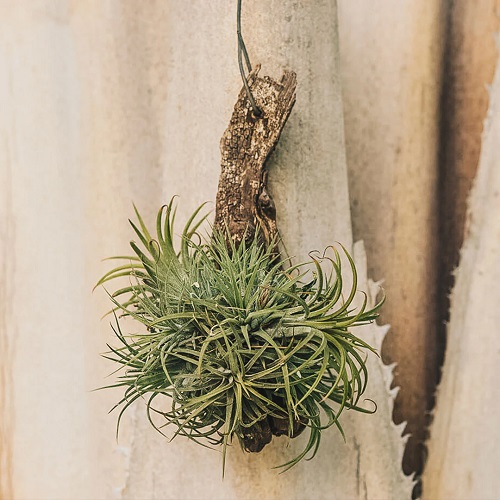
Botanical Name: Tillandsia baileya
While most air plant varieties seem to appear relatively similar to their nicknames, Bailey’s ball moss is a misnomer for this air plant. Not only does it not look at all like moss and, least of all, like a ball, but it does showcase tubular leaves and produces pinkish to mauve-colored flowers as it matures.
15. Circinata
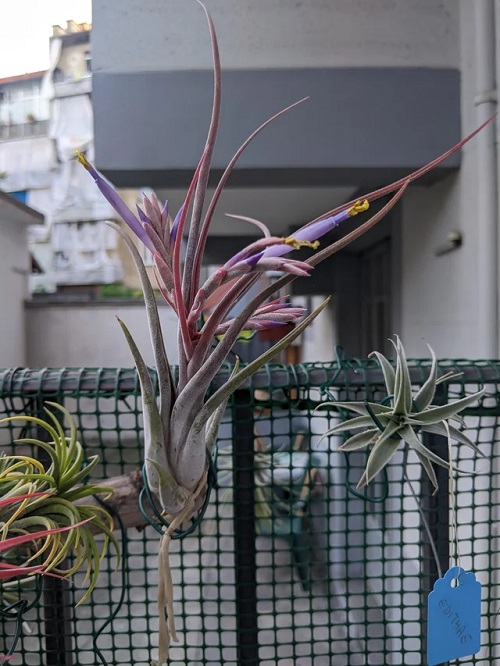
Botanical Name: Tillandsia circinata
Circinata’s leaves look as though styled by a salon, all aligning in one direction for a unique, orderly appearance. Plus, it develops lovely pink and purple flowers as it grows.
16. Fuzzywuzzy
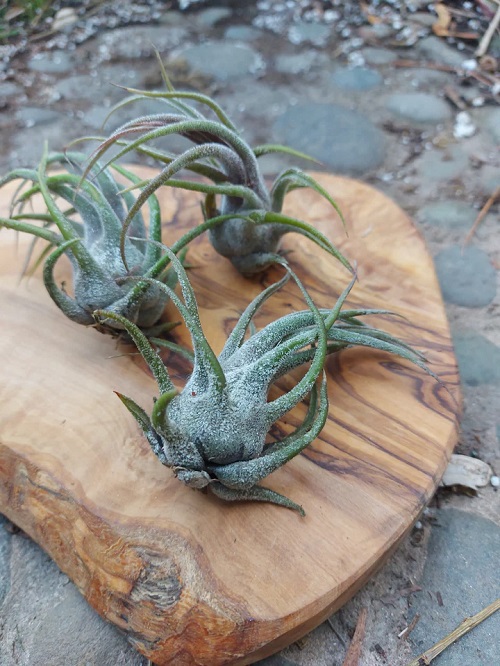
Botanical Name: Tillandsia pruinosa
The Fuzzywuzzy earns its name from its soft, tentacle-like leaves covered in fuzzy trichomes, which create a velvety texture. When fully grown, it’s just about 5 inches but packs a punch of delight thanks to its unusual velvety appearance.
17. Houston Cotton Candy
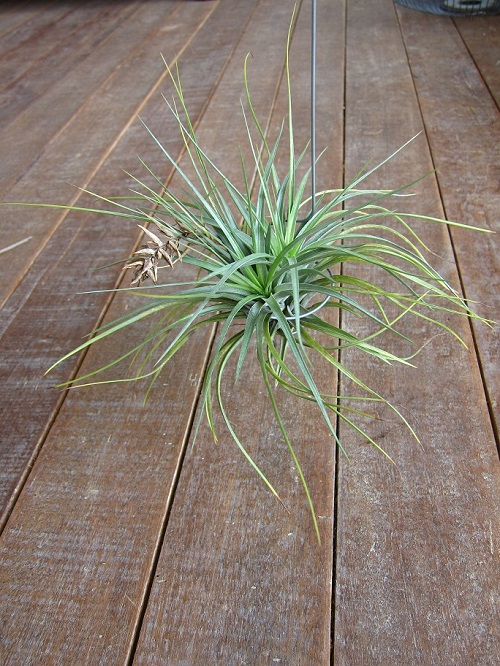
Botanical Name: T. stricta x T. recurvifolia
This hybrid air plant, named for its cotton candy-like blush to rose-pink flowers, combines the leafy abundance of T. stricta with the delicate silvery hues of T. recurvifolia, making it as beautiful as it is rare.
18. Didisticha
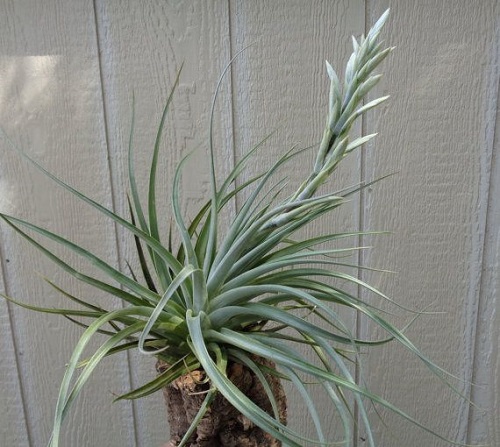
Botanical Name: Tillandsia didisticha
Among the larger Tillandsia species, Didisticha impresses with its silvery-green leaves and distinctive pink stalks that bear pristine white flowers, standing tall at up to 12 inches in maturity.
19. Argentea

Botanical Name: Tillandsia fuchsii var. gracilis
Complete with spindly, thread-like leaves, the Argentea is yet another air plant variety with quite a unique, spider-like appearance. It requires frequent watering due to its thin leaves, which struggle to retain moisture, making consistent care necessary for its survival.
20. Gardneri

Botanical Name: Tillandsia gardneri
Adapted to the steamy, lush climates of Columbia, Brazil, and Venezuela, the Gardneri air plant does best under conditions that mimic its tropical origins. While it revels in humidity, direct sunlight is a no-go for this beauty. Besides that, if you are growing these in drier climates, they will definitely need regular misting.
21. Medusa’s Head
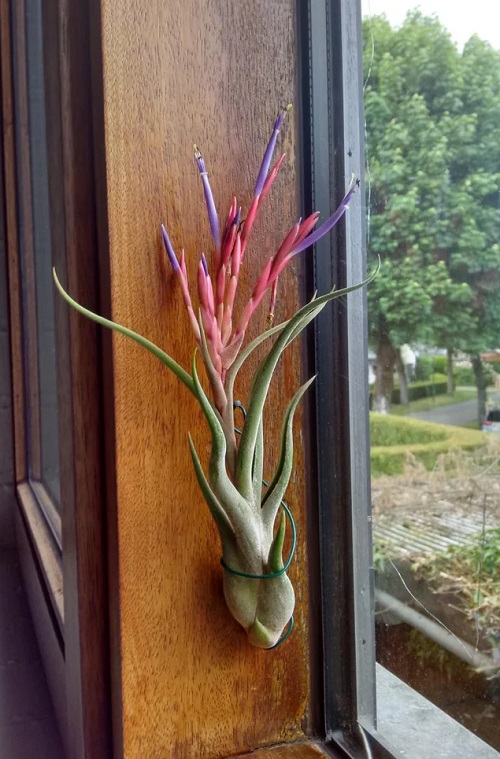
Botanical Name: Tillandsia caput-medusae
Nicknamed “Medusa’s Head,” it surely shouldn’t be a surprise! This easy-to-grow air plant variety showcases a bunch of rounded leaves, each twisting like the mythical snakes of its namesake. The snake-like leaves spread horizontally like strands of hair and produce blue or red flowers during early summer.
22. Velutina Air Plant
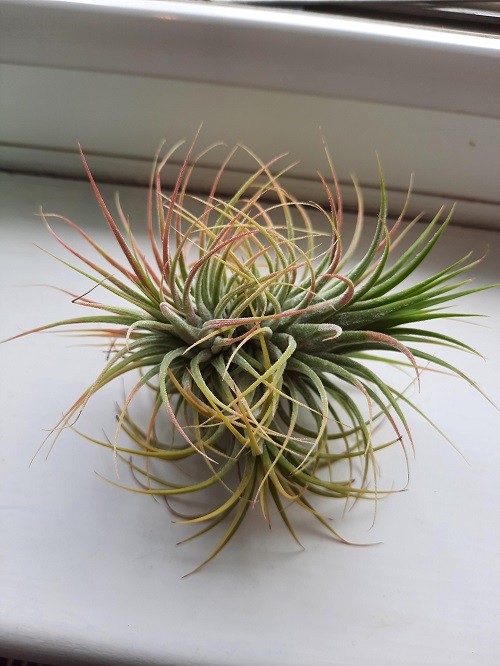
Botanical Name: Tillandsia velutina
Last but not least, add a pop of color to your home with the Vellutina air plant. This plant changes color as it approaches blooming season! Keep the plant happy with plenty of light, and watch the leaves turn a lovely shade of red.






